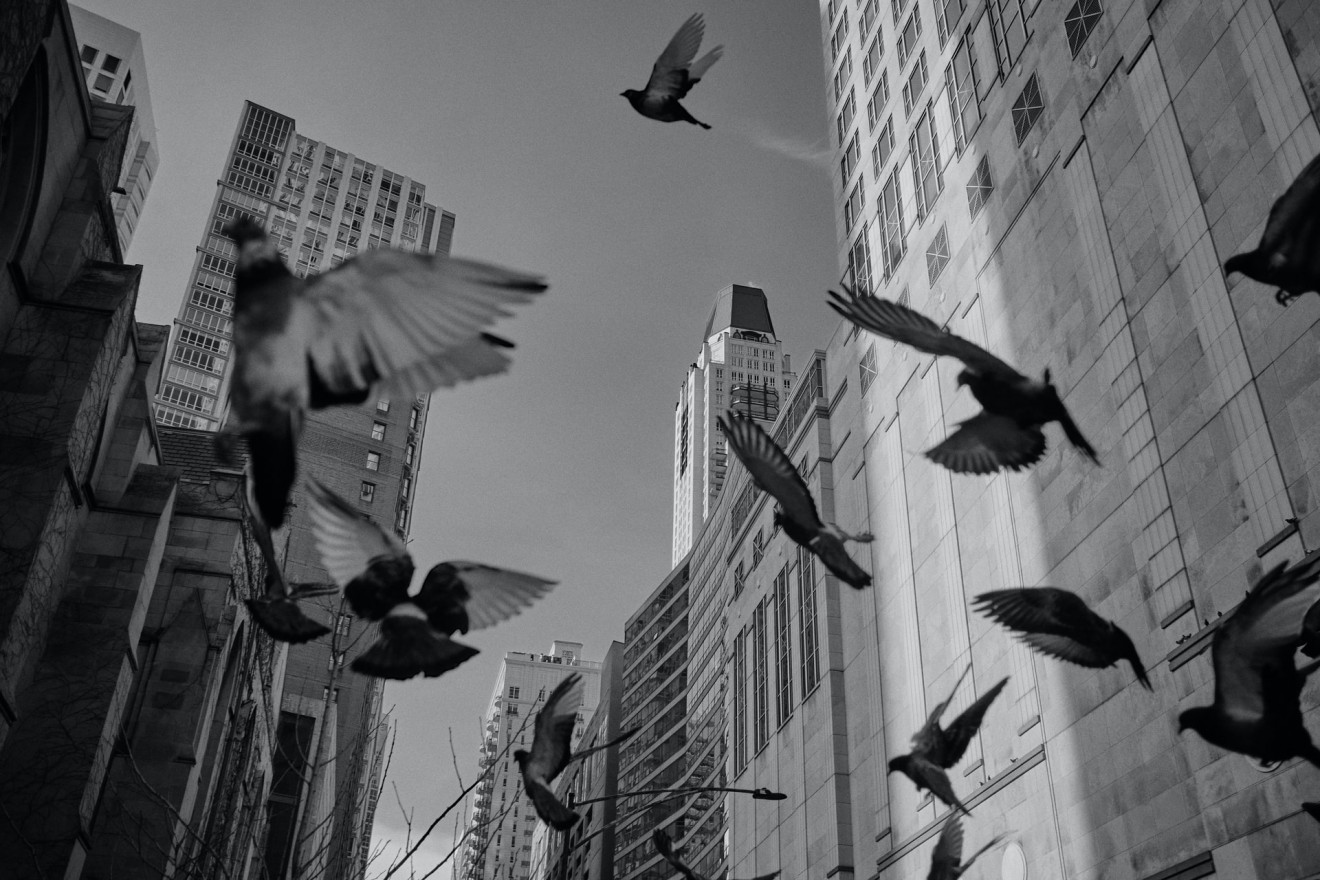
(Ian Battaglia/Unsplash)

(Ian Battaglia/Unsplash)
Originally published in Audubon Magazine Online.
Each night as the sun sinks, thousands of crows descend on Sunnyvale, California. The birds overwhelm the downtown, raising a ruckus as they alight in tree tops to roost for the night. Though welcomed by some, the daily spectacle has become a source of frustration for many of the city’s business owners and locals.
“The crows are very noisy, and their droppings and feathers have created quite a mess,” says Jennifer Garnett, Sunnyvale’s communications officer. “Our council members have received many complaints from residents and businesses. We also have had to increase our frequency of pressure washing both areas.”
Most of the birds gather at Sunnyvale’s Plaza De Sol, an open area bordered by trees and mixed-use buildings at the heart of the city. The 1.6-acre urban oasis boasts an amphitheater for summer outdoor concerts and sits adjacent to historic Murphy Avenue—a tree-lined street that hosts many restaurants and businesses. The plaza has always attracted crows, but the pandemic-fueled increase in outdoor dining—and the food scraps that comes with it—led to record numbers, Garnett says.
In an unsuccessful attempt to deter the birds, the town first tried hazing them with trained hawks and falcons. Reflectors meant to confuse the flocks have also seen limited success. So, last month, Sunnyvale turned to a $20 tool found at any office: a laser pointer. Every weeknight for three weeks, beginning in later January, a trained city employee wielded a handheld green laser purchased on Amazon. For 30 minutes at dusk, the staff person would shine the laser pointer into the plaza treeline where crows are beginning to settle in for the evening. The goal was to startle them each night until they eventually scatter for good.
So far, Sunnyvale is seeing success. “The laser pointer does seem to be working, “ Garnett says. “However, we know that the crows are very smart and are likely to return when the deterrent goes away.” Sunnyvale ceased the pilot program the week of February 14 and has not said whether it will resume the initiative if the birds return.
Sunnyvale is not alone in its corvid conundrum. Urban populations of crows have been increasing in recent decades, and as a result, more cities and towns have tried to discourage them and other prolific species like Canada Geese using a variety of methods, including lasers. Green has been found to be most effective laser color for evening hours—the light scatters in the atmosphere and produces a stronger beam that is more visible in the sky. The beams are also considered to be a safe deterrent. A 2002 study conducted by the U.S. Department of Agriculture’s National Wildlife Research Center found that low-to-moderate power, long wavelength lasers can disperse birds in low-light conditions while presenting “no threat to the animal or the environment.”
Green lasers create “flashing movements” that are foreign to crows’ natural environment, says Kevin McGowan, instructor and crow expert at the Cornell Lab of Ornithology. “There’s nothing magic about lasers, just that the small tool has an effect across a great distance.” Lasers also aren’t a one-and-done solution, McGowan says, noting that the approach isn’t foolproof and works best in combination with other hazing methods.
As an example, he points to several cities in New York that have had varying success with lasers. In 2005, Auburn spent $14,000 on a hazing program spearheaded by the United States Department of Agriculture’s Wildlife Services. At the time, Auburn’s crow population of roughly 64,000 birds outnumbered humans more than two-to-one. A mixed-use approach of lasers, pyrotechnics, and speakers blasting recordings of calls from distressed crows drove almost half of the population out of the city in just one week. Yet, many simply relocated to nearby Cortland or Geneva. And 17 years later, Auburn’s crow problem persists to enough of a degree that local artists recently embraced the city’s divisive mascot with fluorescent mosaics.
Timing can be important for success, experts say. Lasers are most effective at the beginning of the winter season, within a few days of the crows’ establishment, says John Griffin, senior director, urban wildlife programs at the Humane Society of the United States. Crows are intelligent creatures, and Griffin notes that it gets “harder [to drive them away] the longer they’re there.” By the time spring rolls around, the birds will migrate elsewhere—but many return to the same city blocks winter after winter, only growing in numbers.
Even if cities like Sunnyvale manage to temporarily drive out downtown roosts, the crows will likely return unless they can find another suitable habitat. For this reason, Matthew Dodder, executive director of the Santa Clara Valley Audubon Society, thinks that the best solution in Sunnyvale is to learn to live with the birds. “From my point of view, it seems like not much can be done to change the situation,” he says. “So we should adapt to accept it, and appreciate it, and work around it.” Dodder offers up ideas like covering dining areas and being better about trash management to help mitigate the impacts of the birds around the plaza.
Bigger picture, Dodder hopes to see more changes in the development of urban and suburban spaces that would contribute to a more harmonious coexistence between bird and man. “If we can create new green spaces, that might just work,” he says. McGowan agrees, recalling that he and his colleagues considered creating a designated “crow oasis” for the Auburn flocks decades ago. But the city stuck to its ongoing hazing strategy instead.
Another solution is cultural—teaching people to appreciate crows and other urban birds. Instead of finding large flocks creepy or annoying, McGowan says, we should see them as fascinating examples of species adaptation in an age where even the most common species are disappearing. “They’ve been doing this for thousands of years,” he says. “It’s actually a spectacle.”